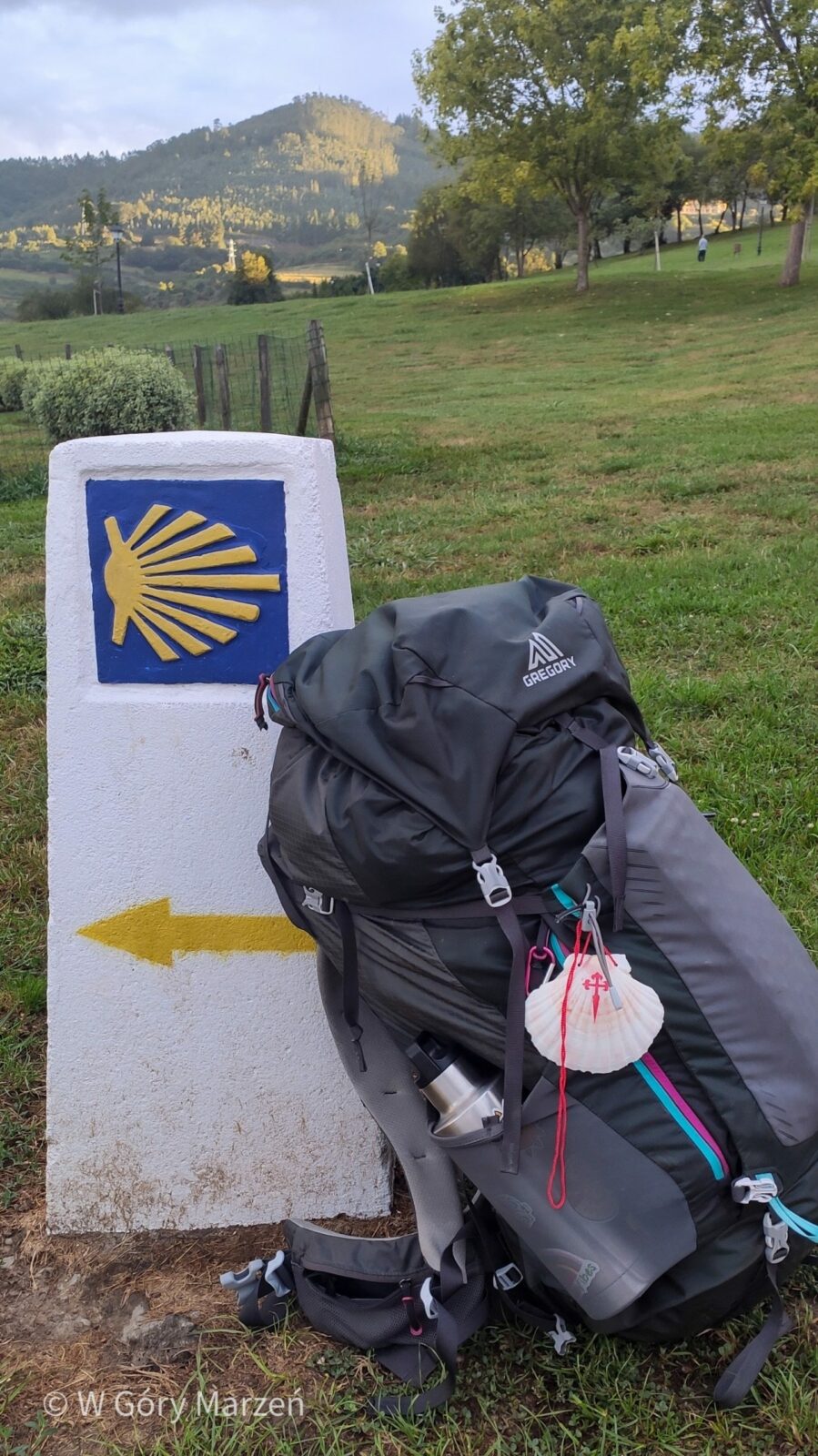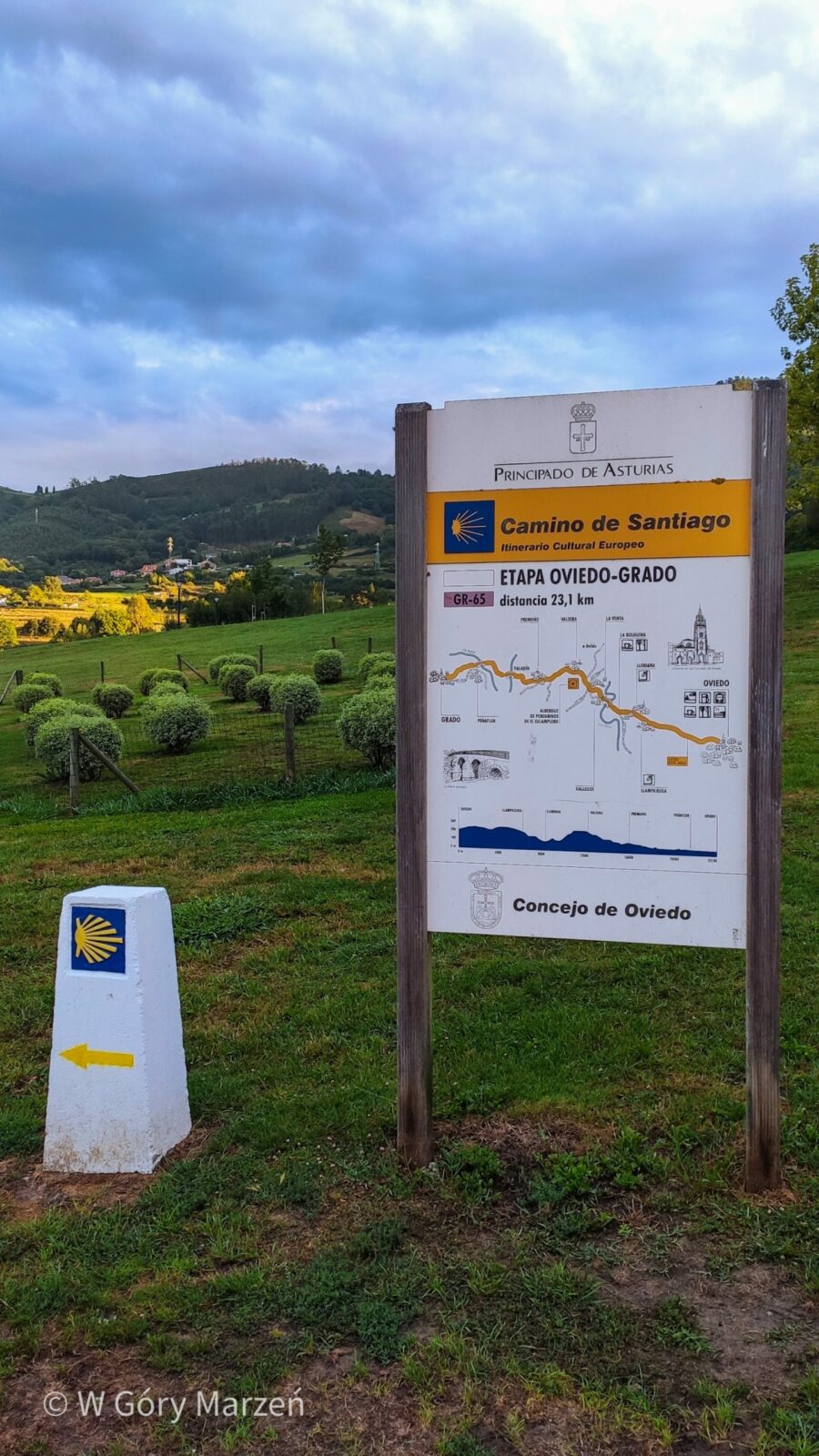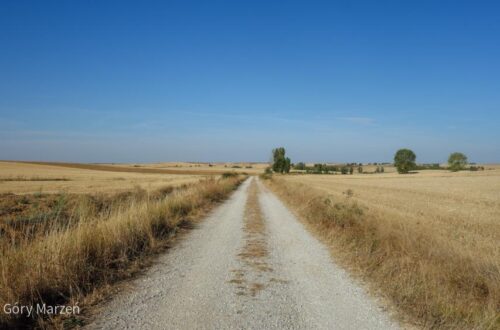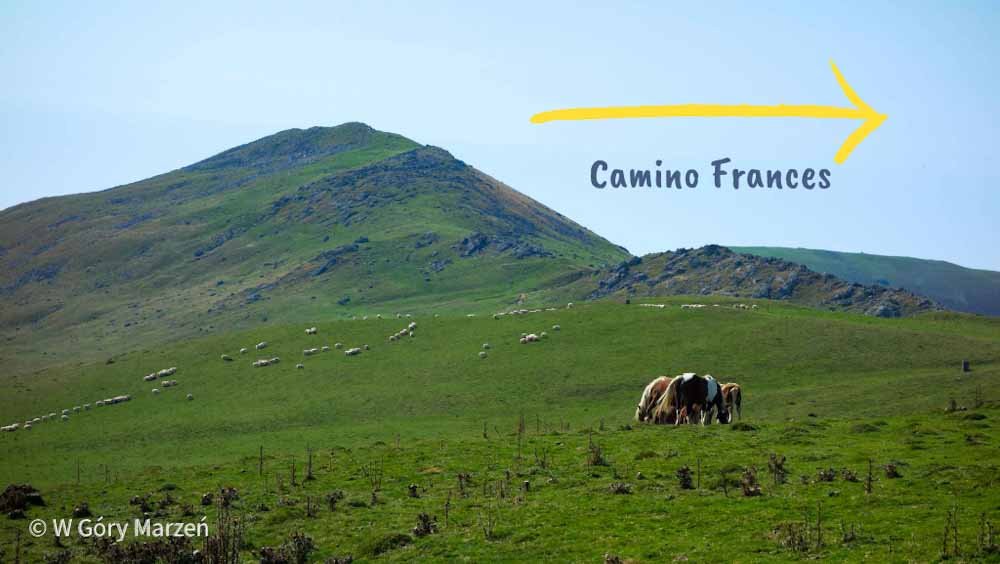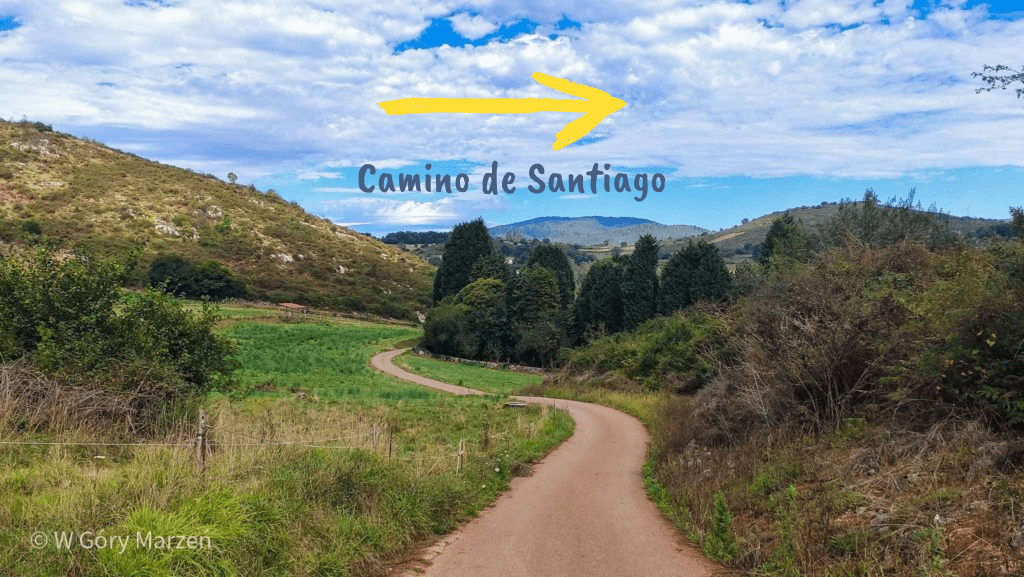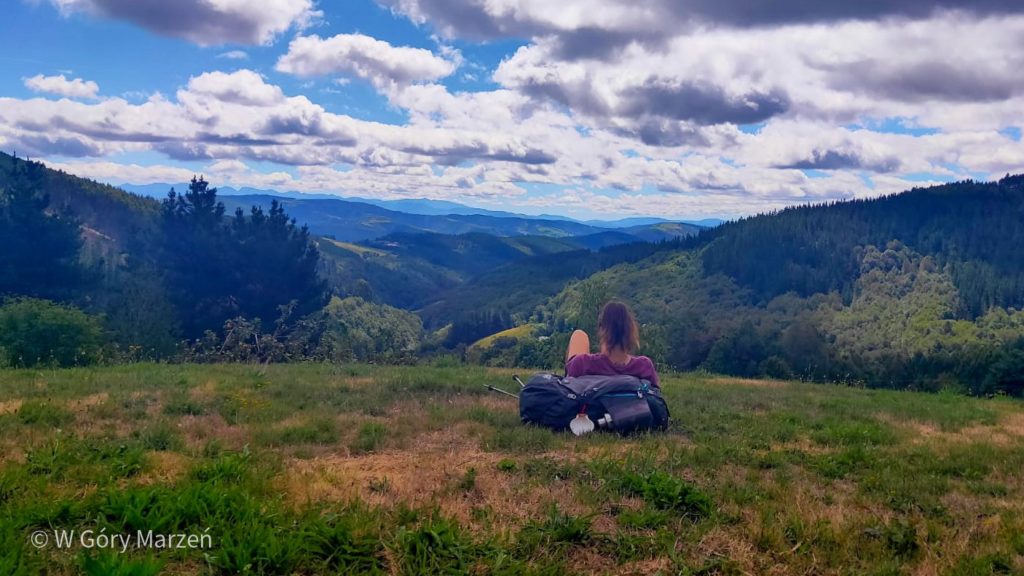
Camino Primitivo – the most beautiful and the most forgotten Camino de Santiago
Camino Primitivo is one of the variants of the Camino de Santiago, a pilgrimage route to the tomb of St. James located in Santiago de Compostela in Spain. It is, together with Rome and Jerusalem, one of the three greatest destinations for Catholic pilgrimages. Although the Way of St. James is a religious pilgrimage by origin, it is a Way for everyone, regardless of faith or religion. More about the Camino de Santiago and its different variants, a list of things on the Camino and how to prepare for it in this post.
Choosing a route – Camino Frances, Camino del Norte or maybe Camino Primitivo?
There are many trails leading to Santiago. Initially, my plans were to use the Camino del Norte, and then the Camino Frances (I even bought a ticket to Saint-Jean-Pied-de-Port, a town at the beginning of this route), but the travel experience says that you should be as flexible as possible and listen to your intuition. This one directed me to the Camino Primitivo, which I walked in August 2020.
Camino Primitivo is the oldest pilgrimage route from Oviedo to Santiago de Compostela (Primitivo means original). The route runs for 315 kilometers among the hills, forests and valleys of Asturias and Galicia – regions of north-western Spain. To walk the route we need about 13-14 days, depending on our pace and planned or not rest days. It is also one of the least frequented pilgrimage routes – most of the roads lead through mountains, fields or forests. Only at the end of the road we encounter more and more asphalt routes.
On the Camino I was going straight from the Tour du Mont Blanc from Italy and I needed a few days to drive 1600 kilometers from Courmayeur, regenerate and rest. By the way, I visited several European cities – Turin in Italy, Montpellier in France, San Sebastian and Bilbao in Spain. A trip straight from the Alps and Dolomites was associated with a much heavier backpack than recommended – my backpack weighed about 12 kilograms. For comparison, some friends had 6-kilogram backpacks. But such are the charms of a 4-month backpacking trip around Europe ;). If we are only going on the Camino, let’s try to slim down the backpack as much as possible – on the route we really do not need much.
The beginning of the pilgrimage Camino Primitivo – Oviedo
Oviedo, the capital of the Asturias region, is a small city (220,000 inhabitants) located in the north of Spain. In the center is the Cathedral of the Savior (San Salvador), where King Alfonso II of Asturias began his pilgrimage in the ninth century and from where the Camino Primitivo begins. I visit the cathedral the same day I arrive in Oviedo. Inside there are famous relics – the remains of a scarf in which the face of Christ was wrapped. I also walk through the old streets of the city, where various sculptures are scattered (including a sculpture depicting Woody Alen, who is known for his love for Oviedo).
The next day in the morning I move towards Santiago. I start the route from the exit from the Cathedral during a beautiful sunrise. The road to Santiago is traditionally marked by yellow arrows and shells – the symbol of St. Jacob. In Oviedo, the trail is marked with shells carved into the pavement.

Oviedo Cathedral
After leaving Oviedo, the trail runs mainly through forests and fields. Sometimes you have to walk a bit along the side of the road. We pass small Spanish villages where you can stop at a local bar for coffee or replenish water supplies. Every day we have about 20-25 kilometers to walk. After passing such a stage in the evening, we can get to know the local culture and delicacies, such as cider in Asturias.
I start the Camino alone, but on the first day I meet other peregrinos, i.e. pilgrims going to Santiago de Compostela. There are not many of us and taking breaks we pass from time to time. I do not know yet that they will be my good friends from the Camino, and from that moment on the way forward will lead us together. At some point, we walk at a distance of several dozen meters from each other and lose the way. This is how we start talking and getting to know each other. In the following days, more people join us on the route and so we start to create our 7-person family. We are already coming to Santiago together.
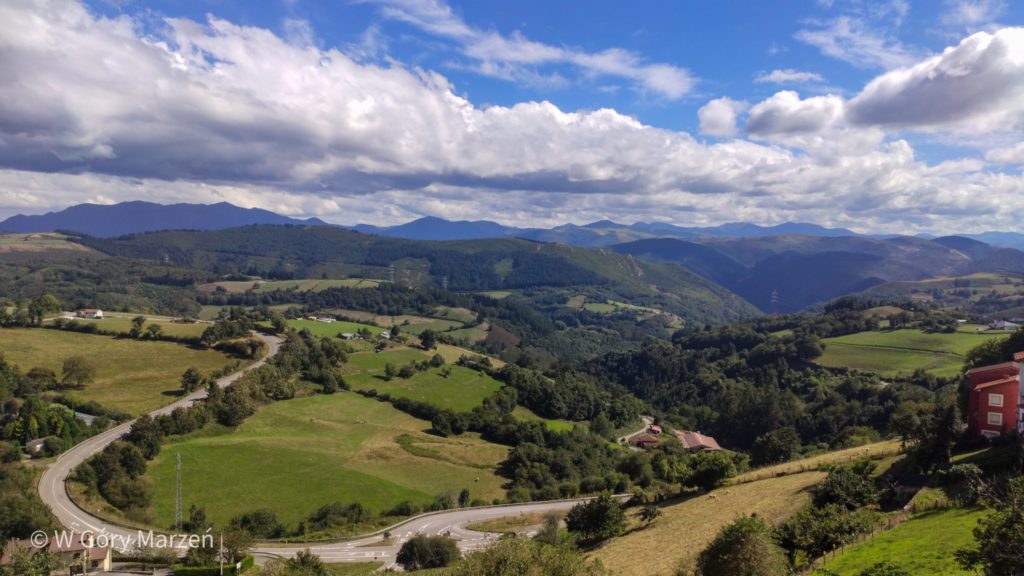
Camino Primitivo 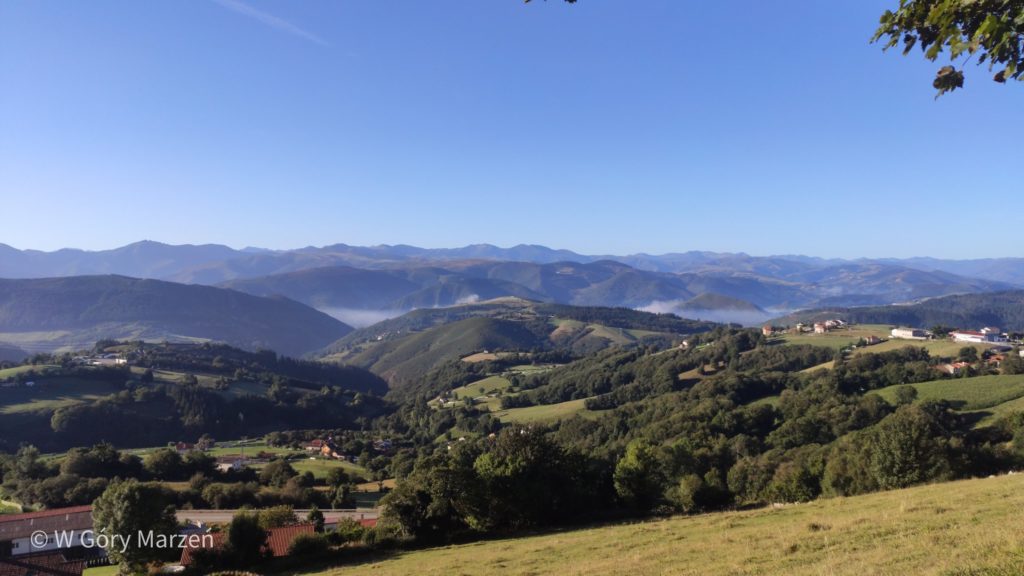
Camino Primitivo
Ruta de los Hospitales
One of the most famous sections of the Camino Primitivo is the Ruta de los Hospitales, a road that runs through the ruins of former pilgrims’ shelters. This is one of the most dangerous sections, because the route is long and runs through mountains, which are often covered with dense fog. Then it is very easy to get lost there. For this reason, it is recommended not to go this way alone. For me, it was also one of the most beautiful episodes of the Camino. Throughout the stage we walk surrounded by nature and mountains, meeting even wild horses on the route.
An alternative route runs through the village of Pola de Allande – recommended for people with weaker physical condition or in bad weather conditions. Asturias is famous for its rain during the summer, but we were lucky that day and had beautiful views of the surrounding area.
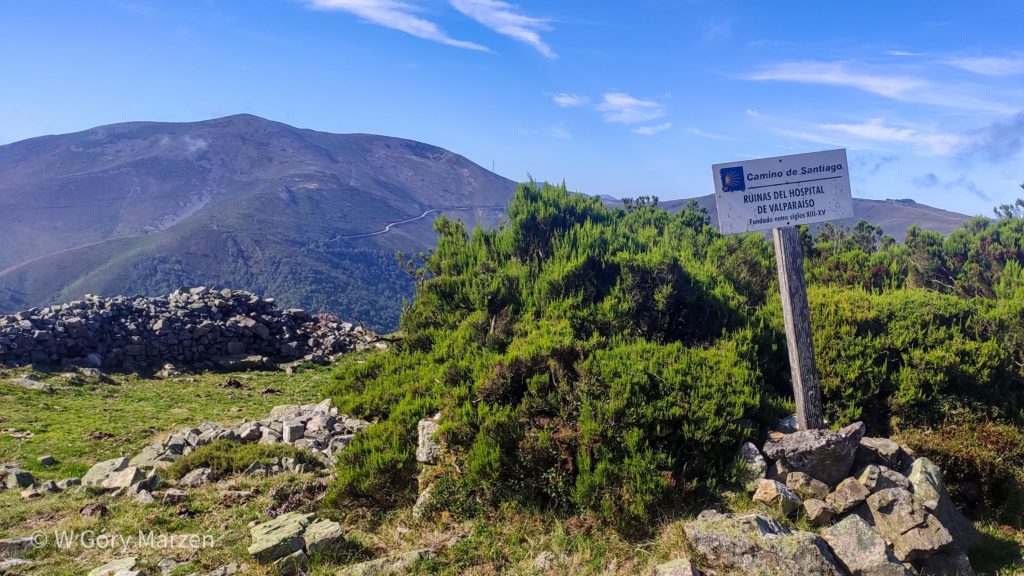
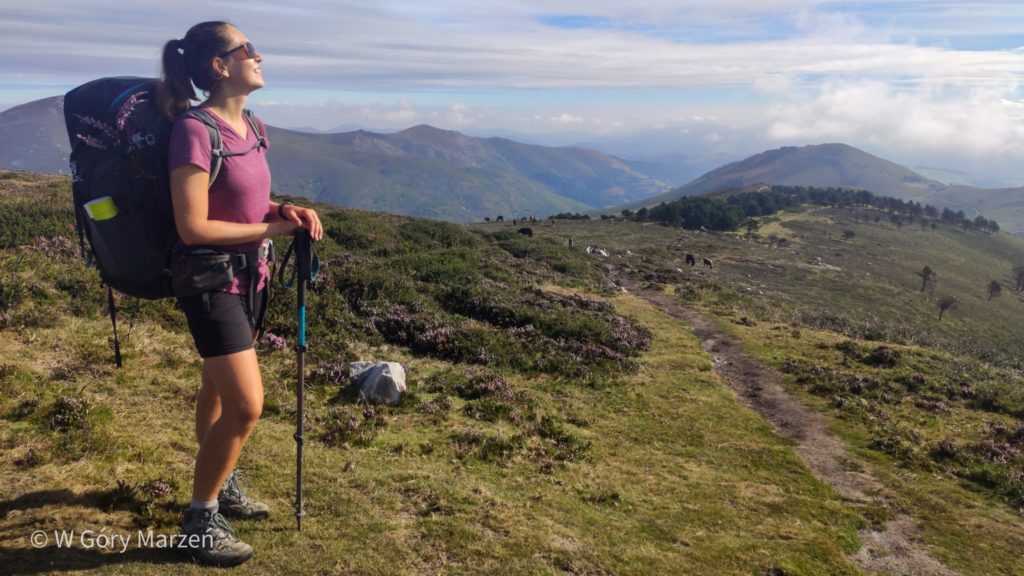
Ruta de los Hospitales 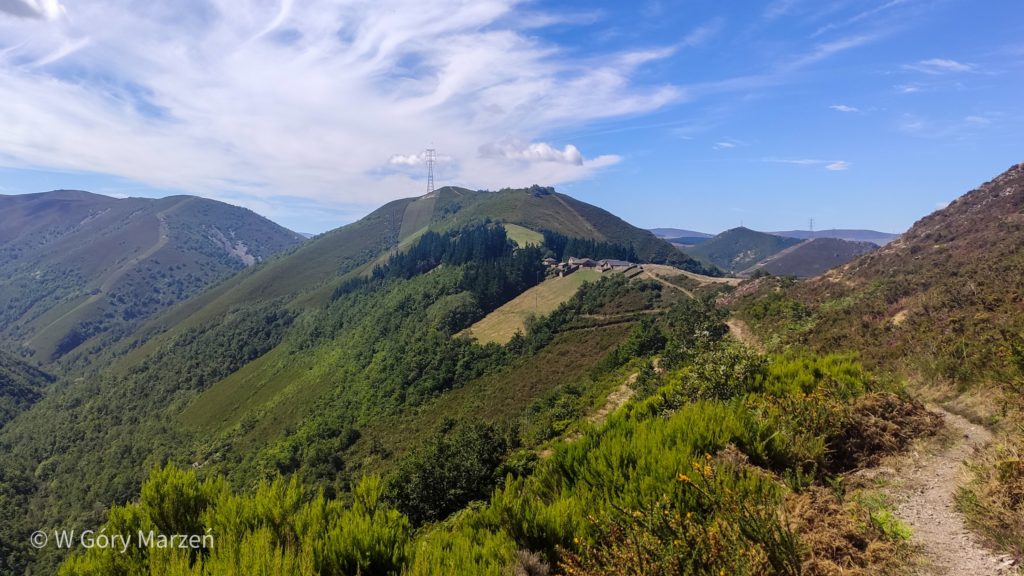
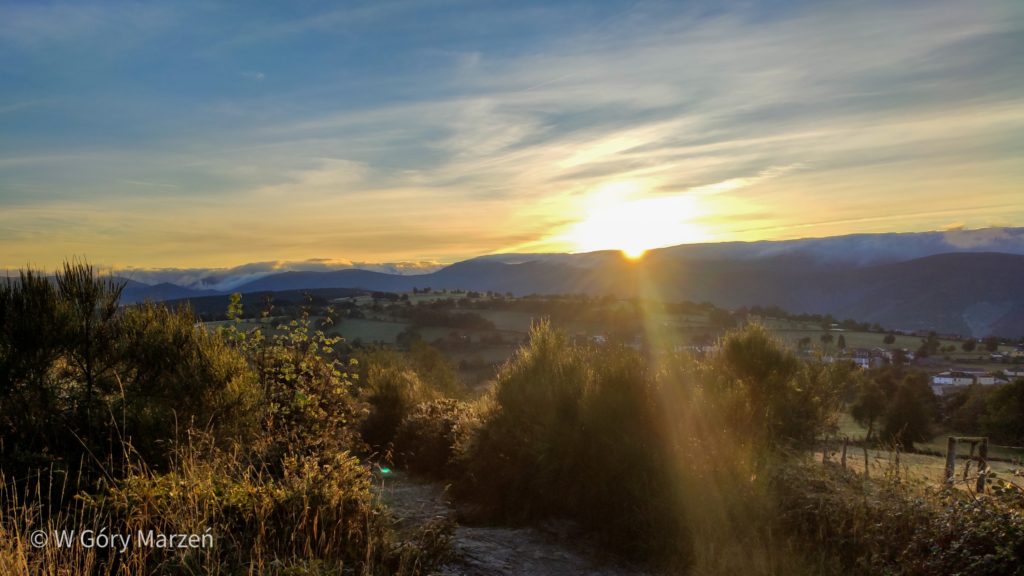
Lugo
Lugo, after leaving Oviedo, the only major city on the Route Camino Primitivo. It is located in Galicia – 100 kilometers from Santiago. Here, too, we begin to meet more peregrinos, because to receive a certificate of pilgrimage it is enough to walk the last 100 kilometers. Many people also choose this variant. We have 4 days left to go to Santiago. Slowly we are beginning to feel the closeness of our destination – Santiago de Compostela.
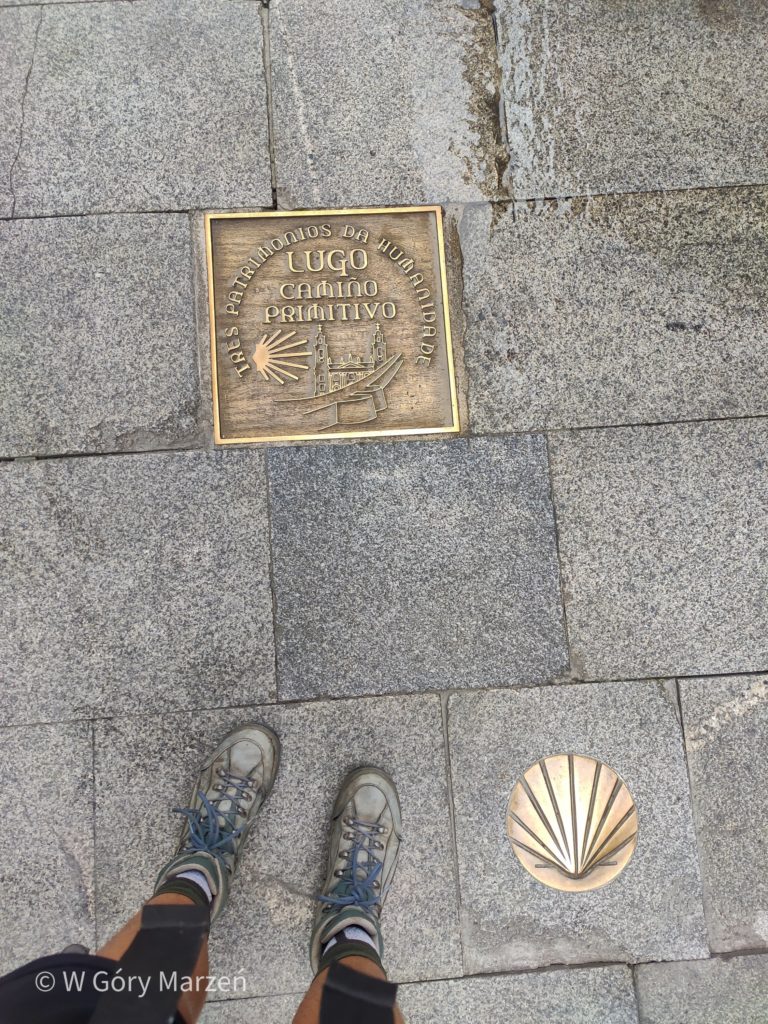
Marking of the trail in Lugo 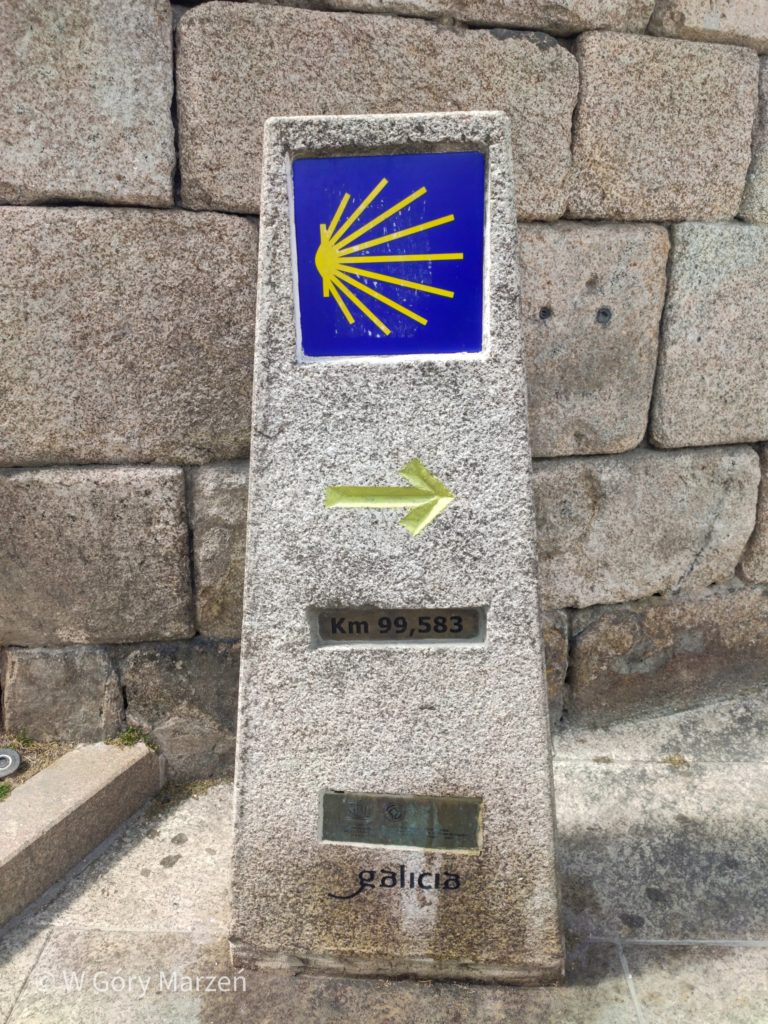
100 kilometers left
Santiago de Compostela
The last two stages of the Camino Primitivo connect in the town of Melide with the most popular Trail camino Frances. Melide is famous for its delicious octopus (Spanish cuisine is largely seafood or meat, also I have tomatoes left to try with olive oil and bread ;)). We expect to see crowds of peregrinos – however, we are positively surprised, there are more people, but it is not a pilgrimage like to Morskie Oko 😉
We look forward to seeing how with each hour of walking the number of kilometers separating us from Santiago decreases. On the one hand, it gets sadder, because we know that for us it means a moment of parting. But we are moving forward dynamically. Finally, after two weeks of hiking, we reach Santiago de Compostela. It is a moment of great joy, but also tears that it is the end.
I went to the next point – the less official end of the Camino – Fisterra and Muxia, where we have the opportunity to see or bathe in the Atlantic Ocean. And then Camino Portugués all the way to Porto, which was a total of 560 kilometers long. But about this in another post 🙂
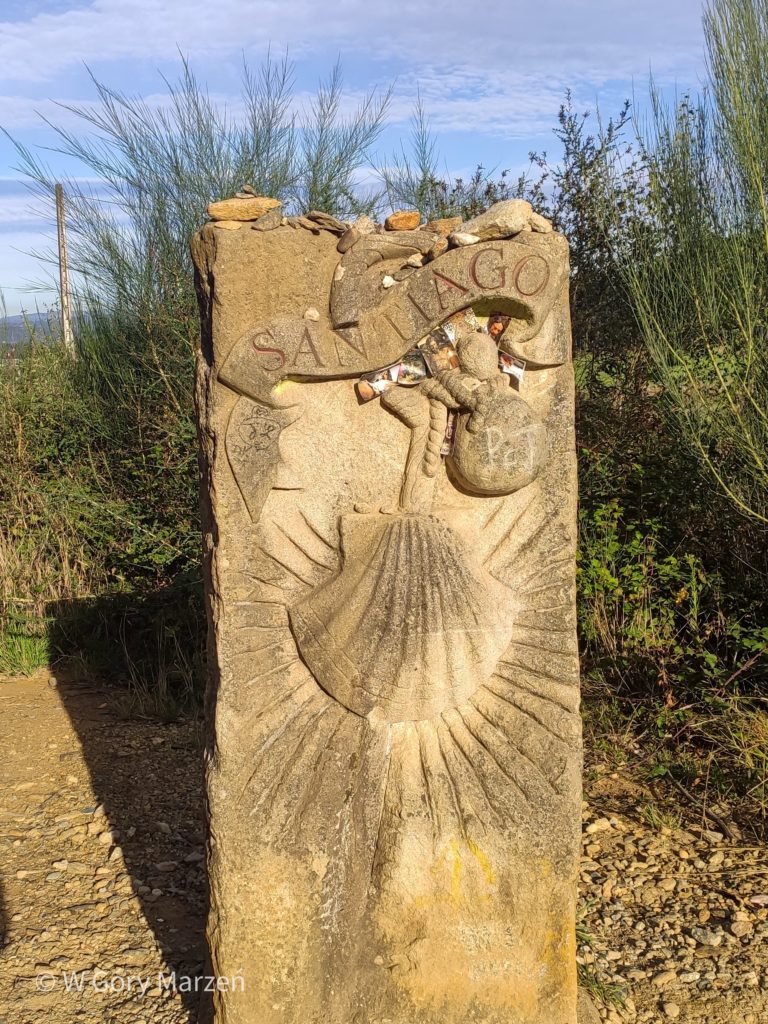
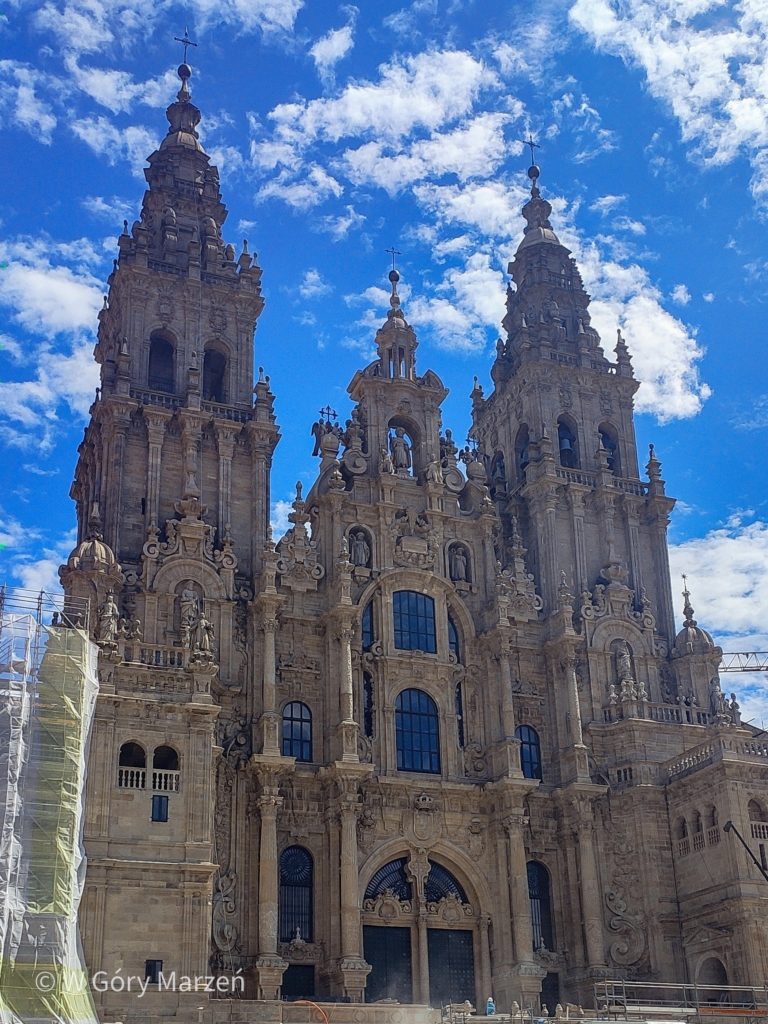
Cathedral of Santiago de Compostela
Accommodation and route on the Camino Primitivo
The accommodation base on the Camino Primitivo is quite well organized. Pilgrims are provided with the so-called albergues, i.e. pilgrims’ houses – public or private, as well as hotels and hostels. Unfortunately, in 2020, due to the epidemic, many public albergues were closed, and in private ones there were much fewer places. On the other hand, there were also much fewer pilgrims. On the route, apart from a group of friends – met on the trail – with whom we walked together, we hardly met other pilgrims.
To sleep in the albergue we are entitled to the so-called Pilgrim’s Passport, or Credencial. It entitles us to use the Camino de Santiago accommodation base. In each facility at check-in we collect another stamp. Such a beautifully supplemented Credencial entitles us to receive compostelana, i.e. the certificate of passage of the Camino de Santiago.

Albergue in Oviedo 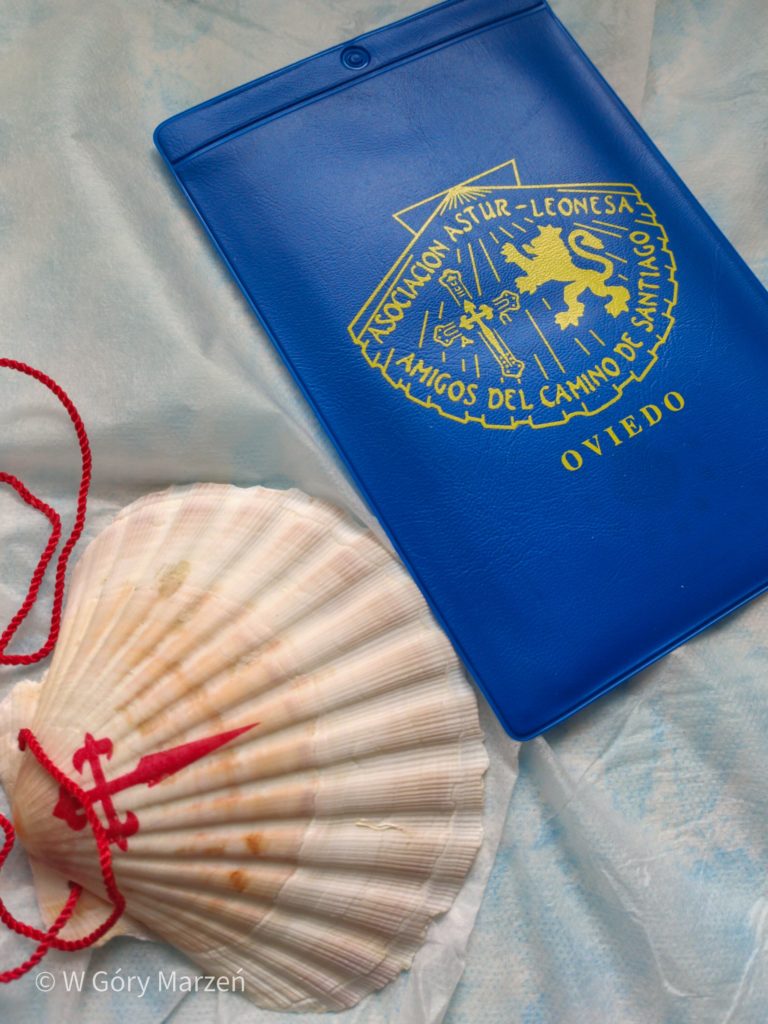
Concha and Passport
Below is a list of accommodationthat I used on the Camino Primitivo route and individual sections:
- Day 0: arrival in Oviedo
- accommodation: Albergue de peregrinos de El Salvador (here we can get a Pilgrim’s Passport and buy the Pilgrim’s Shell, or la Concha)
- Day 1: Oviedo – Grado (25.2 km)
- accommodation: Albergue La Quintana
- Day 2: Grado – Salas (22.1 km)
- accommodation: Albergue La Campa
- Day 3: Salas – Tineo (19.8 km)
- accommodation: Albergue Palacio de Merás
- Day 4: Tineo – Samblismo (17 km)
- accommodation: Albergue de Samblismo
- Day 5: Samblismo – Berducedo (Ruta de los Hospitales, 23 km)
- accommodation: Albergue Camino Primitivo
- Day 6: Berducedo – Grandas de Salime (20.4 km)
- accommodation: Albergue de peregrinos de Grandas de Salime
- Day 7: Grandas de Salim – A Fonsagrada (25.2 km)
- accommodation: Albergue-Pensión Cantábrico
- Day 8: A Fonsagrada – O Cádavo (24.3 km)
- accommodation: Albergue-Pensión Porta Santa
- Day 9: O Cádavo – Lugo (29.5 km)
- accommodation: Hostel Cross
- Day 10: Lugo – San Romao da Retorta (18 km)
- accommodation: Albergue O Cándido
- Day 11: San Romao da Retorta – Melide (27 km)
- accommodation: Albergue Alfonso II El Casto
- Day 12: Melide – Santa Irene (31 km)
- accommodation : Albergue Santa Iren
- Day 13: Santa Irene – Santiago De Compostela (22 km)
- accommodation: Albergue Porta Real
Accommodation prices on the Camino de Santiago range between 5 euros (public) and 10-15 euros (private). Individual albergues can be called, for example, the day before or on the same day to book accommodation. For route planning and accommodation I recommend the Gronze.com website. The website is only in Spanish, but it is quite easy to use and is the best database of information about each variant of the Camino de Santiago route.
What will surprise the Camino?
Camino de Santiago is not an ordinary trekking trail. Although we come from different countries, religions, we are of different ages, we deal with something else – all peregrinos have one goal in common: Santiago de Compostela. This call on the Camino is beautifully described in the poem by Eusebio Garibay: Qien te llama?
| Polvo, barro, sol y lluvia es Camino de Santiago Millares de peregrinos y más de un millar de años. Peregrino ¿Quién te llama? ¿Qué fuerza oculta te atrae? … | Dust, mud, salt and rain are the Camino de Santiago. Thousands of pilgrims and more than a thousand years. Pilgrims: Who is calling you? What hidden force attracts you? … |
It’s one of those beautiful things on the Camino (and traveling in general, but for me the Camino is extremely special in this respect) that you never know what will happen to you. We can plan a path, have an idea of it, and life constantly surprises us. It brought me a truly beautiful adventure full of wonderful loved people with whom I could share the Way to Santiago. I am very grateful for all the moments spent together. Thank you <3
